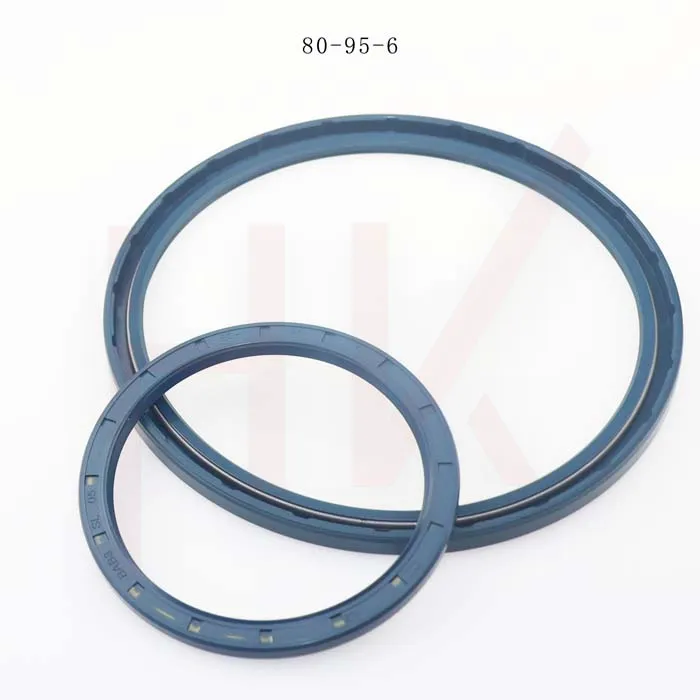Aug . 17, 2024 13:28 Back to list
Hydraulic Oil Seal Dimensions and Their Importance in Machinery Performance
Understanding Hydraulic Oil Seal Sizes
Hydraulic systems are crucial in various industrial applications, acting as the backbone for machinery that requires precise and reliable operation. Central to the performance of these systems are hydraulic oil seals, which play a vital role in preventing fluid leaks, ensuring the longevity of machinery, and maintaining operational efficiency. One of the key aspects that engineers and maintenance teams must consider when working with hydraulic systems is the sizing of these seals.
Importance of Hydraulic Oil Seal Sizes
The size of a hydraulic oil seal is critical for several reasons. First and foremost, a properly sized seal ensures that it fits snugly within its designated groove, creating an effective barrier against the escape of hydraulic fluid. If a seal is too loose, it will fail to contain the fluid, leading to leaks that can cause not only performance issues but also pose safety hazards. Conversely, a seal that is too tight may lead to excessive wear and tear, ultimately shortening the lifespan of both the seal and the hydraulic components.
Measuring Hydraulic Oil Seals
To determine the appropriate size for a hydraulic oil seal, it is essential to take accurate measurements of the sealing area
. Key measurements typically include the inner diameter (ID), outer diameter (OD), and the cross-section (width) of the seal.1. Inner Diameter (ID) This is the diameter of the hole through which the hydraulic fluid flows. The ID must correspond precisely to the shaft or component it is sealing to ensure a proper fit.
2. Outer Diameter (OD) This is the diameter of the seal's outer edge, which fits into the housing or mating surface. It needs to be matched accurately to prevent any space that might allow fluid to escape.
hydraulic oil seal sizes

3. Cross-Section This measurement refers to the thickness of the seal itself. It is essential for maintaining the required press fit and ensuring that the seal can withstand the operational pressures encountered within the hydraulic system.
Factors Influencing Seal Performance
In addition to size, several other factors can impact the performance of hydraulic oil seals
- Material The material of the seal must be compatible with the hydraulic fluid being used. Common materials include nitrile rubber (NBR), fluorocarbon (FKM), and polyurethane, each chosen for their specific resistance to chemicals, temperature variations, and wear.
- Operating Conditions Consideration of the operating environment is vital. High-pressure systems will require seals designed to withstand greater force, while seals used in areas prone to temperature fluctuations may need to be made of materials that retain flexibility under extreme conditions.
- Installation Proper installation is as crucial as size selection. Even the best-sealed products can fail if not installed correctly, as misalignment or overtightening can lead to premature failure.
Conclusion
In the world of hydraulic systems, the significance of correctly sized oil seals cannot be overstated. They are fundamental in maintaining system integrity and ensuring efficient operations. By accurately measuring inner and outer diameters, along with the cross-section, and pairing these dimensions with the right materials for specific operating conditions, engineers can optimize hydraulic performance. Ultimately, taking the time to understand and implement appropriate hydraulic oil seal sizes can safeguard machinery, enhance performance, and reduce maintenance costs in industrial settings.
-
TCN Oil Seal Metal Ring Reinforcement for Heavy Machinery
NewsJul.25,2025
-
Rotary Lip Seal Spring-Loaded Design for High-Speed Applications
NewsJul.25,2025
-
Hydraulic Cylinder Seals Polyurethane Material for High-Impact Jobs
NewsJul.25,2025
-
High Pressure Oil Seal Polyurethane Coating Wear Resistance
NewsJul.25,2025
-
Dust Proof Seal Double Lip Design for Construction Equipment
NewsJul.25,2025
-
Hub Seal Polyurethane Wear Resistance in Agricultural Vehicles
NewsJul.25,2025
-
The Trans-formative Journey of Wheel Hub Oil Seals
NewsJun.06,2025
Products categories
















